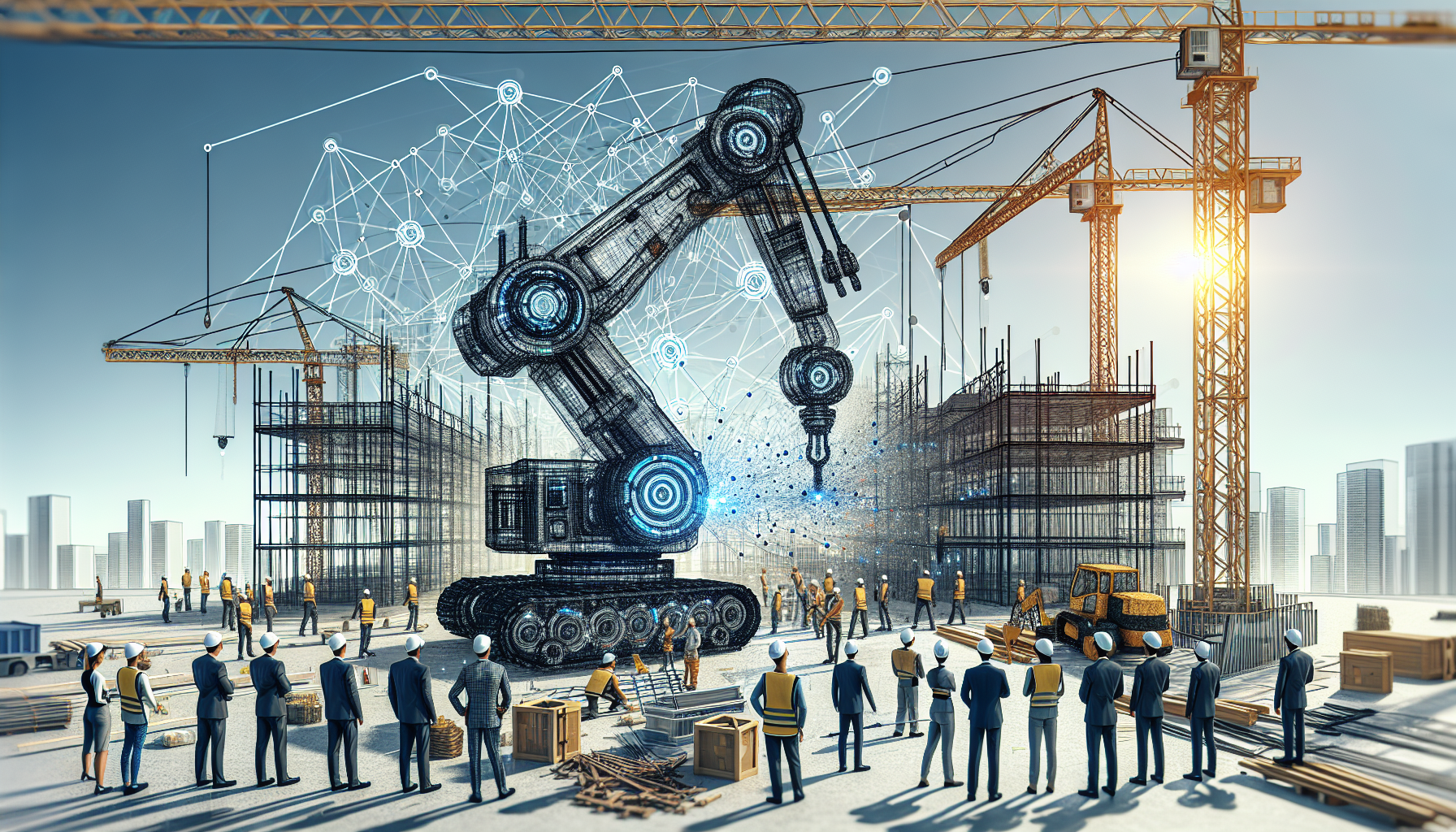The construction industry has long been known for its hard work and lengthy processes. However, it is now experiencing a remarkable change thanks to the rise of Artificial Intelligence (AI) and robotics. These groundbreaking technologies are not only making work faster and safer but also changing how construction projects are designed and managed.
How AI and Robotics Are Transforming Construction
Here are some of the key ways these innovations are being used in construction:
1. Automated Labor Tasks
Companies like Construction Robotics and Fastbrick Robotics are at the forefront of automating jobs like masonry and bricklaying. For example, the SAM100 machine from Construction Robotics can do the work of six skilled masons, cutting labor costs by 50% and doubling construction speed. Meanwhile, Fastbrick Robotics has a bricklaying robot that can lay up to 1,000 bricks every hour, far surpassing what humans can achieve.
2. Smart Design and Planning
AI is helping to create building designs that are not only beautiful but also energy-efficient and structurally sound. This smarter design leads to sustainable buildings, lowering energy costs and maintenance expenses over time. Additionally, software like Takeoff Boost™ by ConstructConnect helps estimators by automating the counting of items in construction plans, saving valuable time and increasing accuracy.
3. Enhanced Site Management and Safety
Drones equipped with AI can fly over construction sites, collect data, and give project managers real-time updates. This allows for quicker decision-making and improves safety on-site. AI systems can also watch over worker behavior, spotting potential dangers and alerting supervisors to prevent accidents, leading to a safer working environment.
4. Heavy Lifting and Repetitive Tasks
Robots now take care of heavy lifting and repetitive chores, allowing human workers to focus on the more intricate and creative parts of construction. Autonomous machines like dozers and excavators can do the heavy lifting, while industrial robots manage tasks like welding and applying adhesives to improve efficiency and reduce mistakes.
5. Post-Construction and Maintenance Monitoring
Even after a building is completed, AI continues to play a vital role. By using sensors and drones, AI algorithms monitor how well a building is performing. They can spot problems early, suggest when maintenance is required, and help optimize how the building operates.
The Advantages of AI and Robotics in Construction
Here are some of the significant benefits these technologies bring to the construction industry:
1. Increased Efficiency
By automating repetitive and dangerous tasks, projects can be completed much faster. Tools like robotic heat welders and remote demolition robots are making construction not only quicker but also safer.
2. Better Safety
AI-powered robots take over risky jobs, greatly reducing the chances of accidents and injuries. Real-time monitoring boosts safety even further by ensuring that potential hazards are quickly addressed.
3. Cost Reductions
Integrating AI and robotics can cut building costs by as much as 20% by streamlining processes and minimizing errors. These automated tasks also lead to savings on labor and more effective use of resources.
4. Environmental Sustainability
With AI-driven designs, buildings can become more energy-efficient and environmentally friendly. This lower environmental impact also means fewer maintenance costs in the long run.
Challenges on the Horizon
Despite the many advantages, there are some hurdles to overcome:
1. Initial Costs
Introducing AI technology can be expensive, which may deter smaller construction companies. However, as technology advances, it is expected that costs will decrease.
2. Workforce Concerns
There are worries that automation could lead to job losses. Nonetheless, the aim is to enhance human work, letting employees engage in more complex and creative tasks.
3. Adoption Barriers
Since the construction industry is traditionally slow to change, integrating new technologies can be tough. Yet, as more companies adopt AI and robotics, wider acceptance will likely follow.
Conclusion
The introduction of AI and robotics into construction is reshaping the way buildings are designed, managed, and built. From automating labor to enhancing safety, these technologies are creating a new landscape in construction. Although challenges exist, the positive impact of AI and robotics is undeniable, paving the way for a brighter future for the industry.
As innovators continue to push the limits of AI technology, we can look forward to even more exciting applications that promise smarter, safer, and more sustainable buildings for all.

Leave a Reply